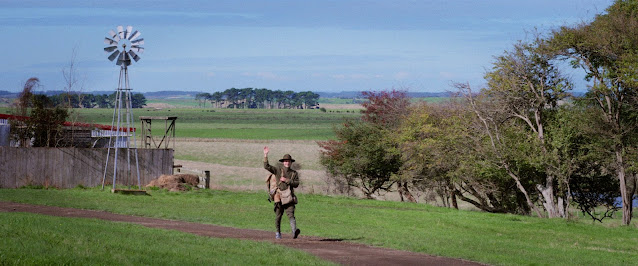The White People (1904) by Arthur Machen
Thanks to the efforts of the fine people over at Severin Films we fans of folk horror now have a sizable new treasure trove of material to dig through in All the Haunts Be Ours: A Compendium of Folk Horror, and I am aiming to keep a catalog of everything as I dive in blind, tackling each film one by one and, eventually, each short film as well. These blog entries will be sprinkled in between other reviews, probably of other folk horror films, so watch out for appropriately-tagged material if you'd like to follow along with me: I'd love to discuss with others.
Readers of this blog and fans of folk horror, come one, come all and listen, for I have wonderful news: Severin Films's All the Haunts Be Ours box-set is finally out, and I received mine last week. I'm still reeling from how well-presented it all is, and the many goodies featured within, but before I talk about any of the actual films, I'd like to talk about Arthur Machen's seminal folk horror short story, "The White People." You may be confused as to why, exactly, the two things are related (besides obviously that they share a genre) but simply turn your attention to the CD's that come with the set and you'll find two discs of Linda Hayden (of Blood on Satan's Claw fame) reading aloud the story, backed by an original score by Timothy Fife and Missionary Work. It was a cool and quite unique addition to the box, and I own a beautiful tome of Arthur Machen's work, so despite all odds, this audiobook is actually the first thing I've checked out in this collection of films as I had never got around to reading the story before. Let's dive in:
"The White People" concerns the natural world and its mysterious forces, fairy tales, occult ritual, and alchemy, all contained within the inner monologue of an innocent young maiden having a spooky walk through a dark wood. What really makes it work, despite the prevalence in the years since the story was published of similar horror stories, is that everything is so damned ambiguous. This is to folk horror what The Haunting of Hill House and The Turning of the Screw were to ghost stories. Admittedly, this may be a hard sell for some people who hate things left vague and nebulous, but what piece of art can cater to everyone anyway?
What puts this story in a league of its own considering the time it was written in is its lack of concern for moral instruction, except simply that danger lurks around every corner. A secret world exists beyond what we are conditioned to see with our human eyes, and once you cross the threshold and begin to see things differently, you cease to be human altogether. The titular white people, are they like the protagonist? Snatched up by the forest itself or the things that dwell there? As I said before, we don't get concrete answers, and it works.
So, okay, it's scary then. Is that really all it takes to be lauded as a landmark achievement in supernatural horror? Well, yes, but that isn't quite the case with this story. You see, what sets this apart from its contemporaries like Lovecraft, is that it is artfully conveyed. It is written as though by a master of prose, not unlike a James Joyce, who strings thoughts, recollections, poetry, fairy tales, and earthen imagery to create a tasty literary dish. Temporally, it's enough to discombobulate the reader, but that's sort of the whole point: the story is about a young girl going deep into the woods and finding herself unable to escape its primordial gravity. Sparse use of paragraph breaks is probably the most divisive aspect of the writing, but I thought it was all done well; it was not as difficult to get invested in as other books written in a stream-of-consciousness narration style. Still, those who like their reading easy will probably not have fun with the book overall, especially with its narrative ambiguity.
So how about the audiobook itself then? Honestly, it just makes me wish more vintage horror shorts could be presented in a format like this and with a business model less confining than Audible, but I digress. Despite some definite misreadings and word changes that are to be expected, Linda Hayden's voice is perfect for the story and wonderful to listen to, while the score elevates everything tremendously: spooky cues play at the perfect times, and the mixture of beautiful folk music with horror stings and abrasion works very well. It's a reverent treatment of one of the horror canon's true classics and I applaud its inclusion here.
I can't wait to dig a little deeper into All the Haunts Be Ours, but so far, I'm very impressed with the consideration the fine folks at Severin have paid to one of the coolest collections of films I have ever seen.




Comments
Post a Comment